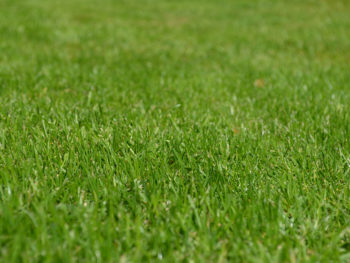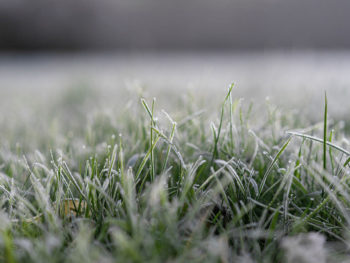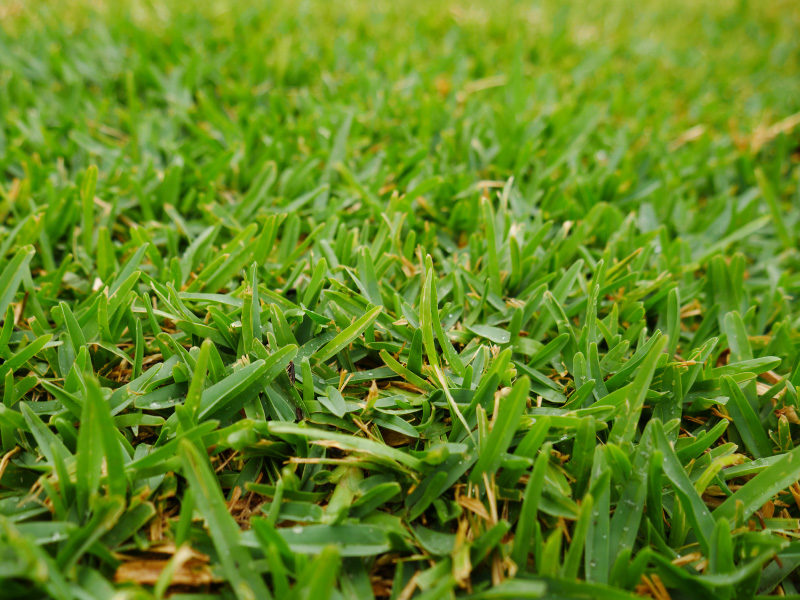There’s nothing like an instant lawn to transform your home quickly from drab to fab. But don’t be fooled by the word “instant”. While the bare soil has been transformed with grass, it takes some time for the lawn to completely establish and become fully usable. Many homeowners fall into the trap of failing to care for their new turf appropriately, and end up with a brand new lawn that already needs a facelift. However, with the right approach, and a little bit of care and attention, you’ll soon have a well-established and thriving lawn gracing your yard.
Treat your new lawn like a baby
Treat your newly laid lawn just like you would a new baby – feed it, give it a drink regularly, look after it and don’t let anyone hurt it. You can even talk to it if you want to!
The first two to three weeks after your new lawn has been laid are the critical phase in lawn establishment. It’s during this time that your lawn will need the most care and attention. There’s no point getting a beautiful new lawn laid and then failing to look after it. Rigorous care and attention now will prevent problems from developing later and give you a lawn that will establish quickly and well.
Prepare, prepare, prepare
Soil preparation is one of THE most important parts of instant turf installation. Without proper preparation, your grass can’t get off to its best start. The best thing you can do to help your grass establish fast is to fertilise the topsoil before the turf is laid. This will give your lawn a good kick start into quick growth. Failing to fertilise will mean your grass may not be able to take root as quickly, and thus may not be able to maintain a healthy root system as it grows.
Watering
Keeping the soil moist and the grass well-watered is essential to the establishment of a strong and healthy lawn. This is particularly important in the first week or two while the turf is taking root.
Your new lawn needs water within 30 minutes of installation to make sure it can deal with the stress of being harvested, transported and re-laid. At least 25mm of water initially should be enough to rehydrate the grass. From then on, water daily until the grass is firmly rooted and established. If the weather is very hot and dry, you’ll need to water twice daily during the establishment period. The best time to water is early in the morning.
Give the lawn enough water to wet the soil underneath the turf strips, but avoid overwatering, as this can cause the turf strips to lift from the soil. Try to keep the lawn damp, not wet.
Watering timeline for new turf:
- For the first two weeks, water once to twice a day while the turf is establishing.
- After the lawn has established a root system (you’ll know this has happened if you can’t pull the corners of the turf up), you can ease up on the watering just a little. For the next three weeks water the lawn every second day.
- You’ll need to keep watering the new turf for at least one-and-a-half to two months until it is reasonably well established. During weeks 6 – 8, water every second to third day.
- After this, you can settle back into your regular lawn watering routine. Once a week is fine, although keep an eye on the condition of your lawn and water more if it gets dry.
Click here to discover the do’s and don’ts of watering your lawn. And if you want to learn how to establish a more drought-tolerant lawn, click here.
Fertilising
For best results, give your new lawn a good dose of high nitrogen fertiliser six week after laying it. This will give the young, vulnerable grass a boost of nutrients to help it continue to establish into a strong and healthy lawn. Follow this with a deep watering or fertilise just before rain.
Mowing
While the turf is establishing, don’t even consider mowing it. It needs time to grow strong first, and shouldn’t be mown until the grass is firmly rooted and has a tight bind to the soil. Wait at least two to three weeks to mow your lawn to give it the best chance of not only surviving but thriving.
As a general guide, once the lawn reaches around 6cm in height, you can give the new grass its first mow. However, grass grows at different rates depending on the season, so it’s best to check first whether it’s ready to mow. Do this by taking a handful of grass and seeing if you can lift it. If it’s firmly rooted and you can’t lift it, it’s fine to give it a light mow. If you can lift the grass, it’s better to wait to mow a bit longer.
Only remove about one third of the grass leaf, and never mow the grass below 4cm while your new lawn is establishing.
For more on how to get the most out of your lawnmowing, click here.
Using the lawn
Don’t be tempted to walk on your new lawn “just to check how it’s going”. Big mistake. It’s far better to stay off it completely for as long as you can. You need to give your newly laid lawn time for its roots to become firmly anchored in the soil before starting to use it. This will give the new grass the best chance of establishing quickly and well. Plus, the soil can be susceptible to compaction due to all the extra watering a new lawn should receive, especially if it gets a lot of foot traffic.
How long you need to stay off your new grass depends on the weather conditions and the season in which you install the lawn. In warmer weather, try to avoid walking on or otherwise using your lawn for a period of four weeks. You might be able to get away with two weeks, but try to keep all foot traffic to a minimum for four weeks if at all possible, to give the grass a much better chance of establishing well.
If installing a lawn in late autumn or winter, it’s best to avoid using the lawn for a longer period as the grass will take longer to establish and will be easier to damage. Try to avoid using your lawn excessively until spring. These timelines are just a guide, however, so be guided by your grass. Try the lawn lifting test outlined above to check when your lawn is able to be used.
If you absolutely must use the lawn during the establishment period, try to keep it as minimal and light as possible. Don’t spend a long time standing on the grass, just do what you need to do and get off the lawn as quickly as you can. You could also try placing boards or planks on the relevant area of the lawn to help minimise foot depressions.
As well, if you have pets, try and encourage them to do their business somewhere else. Click here to discover how to have a happy pet and a happy lawn.





 Dealing with mushrooms and toadstools in your lawn
Dealing with mushrooms and toadstools in your lawn
